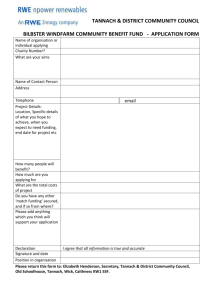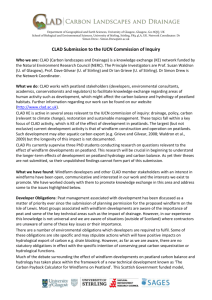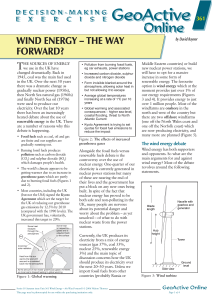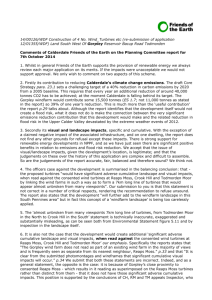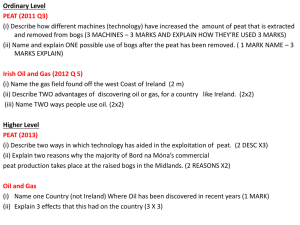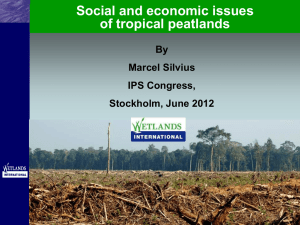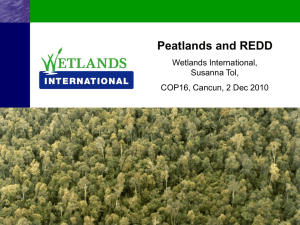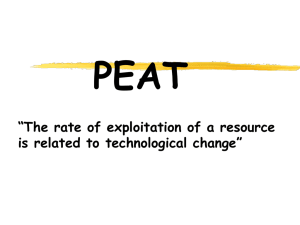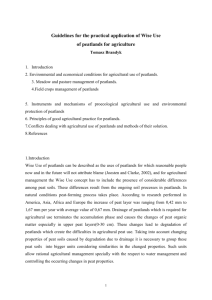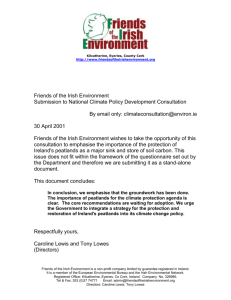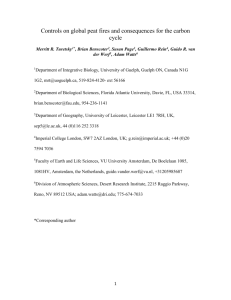click here to read
advertisement
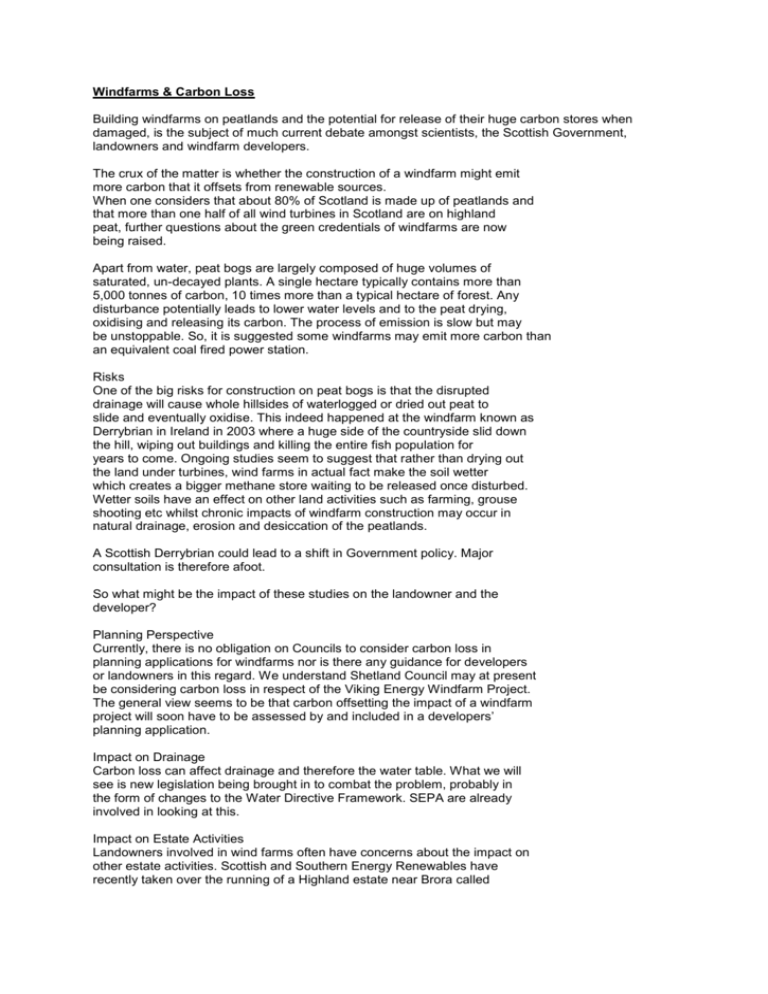
Windfarms & Carbon Loss Building windfarms on peatlands and the potential for release of their huge carbon stores when damaged, is the subject of much current debate amongst scientists, the Scottish Government, landowners and windfarm developers. The crux of the matter is whether the construction of a windfarm might emit more carbon that it offsets from renewable sources. When one considers that about 80% of Scotland is made up of peatlands and that more than one half of all wind turbines in Scotland are on highland peat, further questions about the green credentials of windfarms are now being raised. Apart from water, peat bogs are largely composed of huge volumes of saturated, un-decayed plants. A single hectare typically contains more than 5,000 tonnes of carbon, 10 times more than a typical hectare of forest. Any disturbance potentially leads to lower water levels and to the peat drying, oxidising and releasing its carbon. The process of emission is slow but may be unstoppable. So, it is suggested some windfarms may emit more carbon than an equivalent coal fired power station. Risks One of the big risks for construction on peat bogs is that the disrupted drainage will cause whole hillsides of waterlogged or dried out peat to slide and eventually oxidise. This indeed happened at the windfarm known as Derrybrian in Ireland in 2003 where a huge side of the countryside slid down the hill, wiping out buildings and killing the entire fish population for years to come. Ongoing studies seem to suggest that rather than drying out the land under turbines, wind farms in actual fact make the soil wetter which creates a bigger methane store waiting to be released once disturbed. Wetter soils have an effect on other land activities such as farming, grouse shooting etc whilst chronic impacts of windfarm construction may occur in natural drainage, erosion and desiccation of the peatlands. A Scottish Derrybrian could lead to a shift in Government policy. Major consultation is therefore afoot. So what might be the impact of these studies on the landowner and the developer? Planning Perspective Currently, there is no obligation on Councils to consider carbon loss in planning applications for windfarms nor is there any guidance for developers or landowners in this regard. We understand Shetland Council may at present be considering carbon loss in respect of the Viking Energy Windfarm Project. The general view seems to be that carbon offsetting the impact of a windfarm project will soon have to be assessed by and included in a developers’ planning application. Impact on Drainage Carbon loss can affect drainage and therefore the water table. What we will see is new legislation being brought in to combat the problem, probably in the form of changes to the Water Directive Framework. SEPA are already involved in looking at this. Impact on Estate Activities Landowners involved in wind farms often have concerns about the impact on other estate activities. Scottish and Southern Energy Renewables have recently taken over the running of a Highland estate near Brora called Gordonbush which they are actively using to monitor the effect of the proposed windfarm there on estate activities and to come up with some ideas as to how these can be best mitigated. Grants are available for helping to protect against carbon loss i.e for ditch blocking. A special Government Committee has been set up to investigate the problem and there are rumours that the Forestry Commission are to introduce a policy of “renewable planning gain” into the forestry world where developers of windfarms and other renewable projects could be obliged to plant trees to offset carbon loss. Given the speed of these consultations, we expect new legislation and regulations to follow soon. For further Information: Please e-mail ken.gerber@andersonstrathern.co.uk
